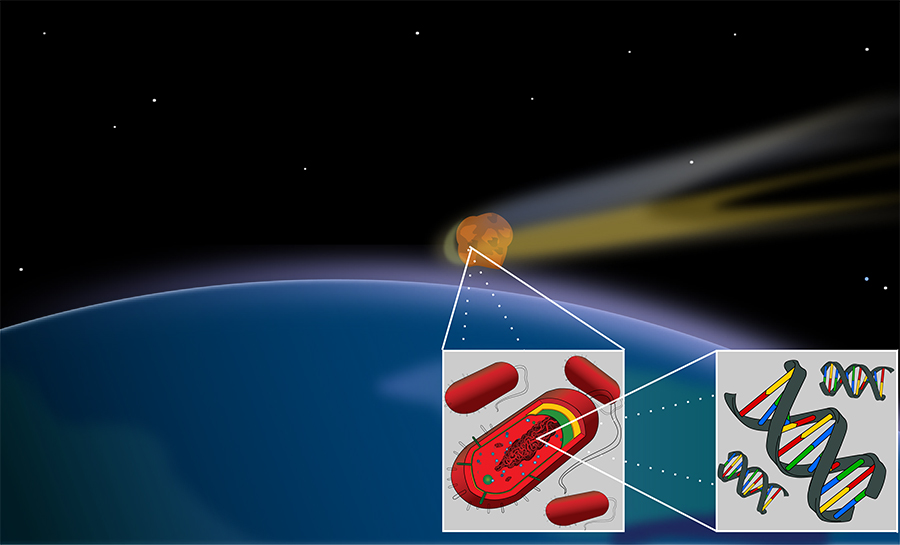The concept of life beyond our planet has been a subject of human curiosity and intrigue for centuries. From books to movies and beyond, our fascination with the possibility of extraterrestrial life has sparked our imagination and fueled our thirst for exploration. However, despite our collective imagination and wonder, we have yet to find conclusive evidence for the existence of life outside our planet.
Despite this, there have been instances of evidence that hint at the possibility of alien life, which have sparked debate and controversy among the scientific community. In this article, we will explore the top 10 most controversial pieces of evidence for the existence of alien life. From radio signals to meteorites, crop circles to UFO sightings, we’ll delve into the scientific theories behind each piece of evidence and examine why they have stirred up controversy among scientists and the general public alike.
While the search for concrete evidence of alien life continues, these controversial pieces of evidence offer a tantalizing glimpse into the possibility of extraterrestrial life and keep our curiosity about the universe and our place in it alive.
The Wow! Signal
The “Wow! Signal” has remained a mystery in the scientific community since its discovery in 1977. This narrowband radio emission lasted for just 72 seconds, but its power was so extraordinary that it caught the attention of astronomers all over the world. Its intensity was so great that it was unlike any other signal ever detected from space.
Despite extensive analysis, the origin of the signal remains unknown. Some scientists have suggested that the signal could have been sent by an intelligent extraterrestrial civilization attempting to communicate with Earth, while others argue that it was simply a natural phenomenon. Nevertheless, the discovery of the Wow! Signal has inspired continued research into the search for extraterrestrial intelligence, and the possibility that there may be other intelligent life forms in the universe.
The mystery surrounding the Wow! Signal is a reminder of the vast unknowns that still exist in the universe, and the tantalizing possibility of discovering alien life.

The Mars Rock
The Mars Rock, a meteorite that fell to Earth from the Red Planet, sent shockwaves through the scientific community in 1996. This small rock, discovered in Antarctica, appeared to contain tantalizing clues that pointed towards the existence of ancient microbial life on Mars.
The rock, officially known as ALH 84001, was found to contain microscopic structures that resembled fossilized bacteria. This led some scientists to hypothesize that Mars may have harbored life in its distant past, and that this meteorite had preserved evidence of these ancient Martian organisms. The implications of such a discovery were profound, with the potential to reshape our understanding of the possibility of life beyond Earth.
However, not everyone was convinced. Other scientists pointed out that the rock’s features could have been formed by natural processes, such as heating and cooling, or chemical reactions, without the involvement of any living organisms. The controversy over the Mars Rock continues to this day, with ongoing debates and studies to determine whether the meteorite does indeed contain evidence of past Martian life.

The Mars Rock remains a fascinating and controversial piece of evidence in the search for extraterrestrial life. While the debate continues, it serves as a reminder of how even the smallest pieces of rock can hold clues to the mysteries of the universe and ignite our imaginations about the possibility of life beyond our own planet.
The Kepler Exoplanets
The Kepler Space Telescope has been instrumental in expanding our understanding of the universe and its potential for harboring extraterrestrial life. By scanning the skies and detecting exoplanets, Kepler has provided us with valuable data that suggests the existence of habitable worlds beyond our solar system. Many of these exoplanets are located within the habitable zone of their stars, which means that they are situated at the right distance from their host stars to potentially support liquid water and other conditions necessary for life as we know it.
While the discovery of these exoplanets is exciting, it’s important to note that we still have much to learn about them. Further observations and analysis will be needed to determine if any of these exoplanets actually contain life. Nonetheless, the Kepler exoplanets provide a tantalizing glimpse into the potential for life elsewhere in the universe, and the ongoing search for exoplanets continues to be a fascinating and important area of study in the field of astrobiology.
The UFO Sightings
UFO sightings have long been a topic of fascination and debate among the public, as well as within the scientific community. While skeptics often attribute these sightings to misidentifications of natural phenomena such as clouds, weather balloons, or aircraft, there are still many accounts that cannot be easily explained.
Some of the most compelling cases involve sightings by trained pilots or military personnel, who have reported encountering craft that display flight characteristics beyond the capabilities of human-made technology. These sightings often involve objects that move at high speeds, change direction suddenly, or remain stationary in mid-air without any visible means of propulsion.
Furthermore, some reports include descriptions of encounters with intelligent beings that are not of human origin. These beings are often described as having non-human physical features and exhibiting advanced technology, which suggests that they may be extraterrestrial in origin.
While it’s difficult to say definitively whether or not these sightings are evidence of alien spacecraft, they do provide a compelling case for further investigation into the possibility of extraterrestrial life. And as technology advances and our understanding of the universe expands, we may yet discover concrete evidence that supports the existence of intelligent life beyond our own planet.
The Alien Abductions
The notion of alien abduction has been one of the most controversial pieces of evidence for alien life. Many people have claimed to have been taken against their will by extraterrestrial beings and subjected to experiments, often involving invasive procedures that would seem to defy the laws of physics as we know them. These accounts have been widely disputed, with many skeptics suggesting that they are nothing more than hoaxes or the result of sleep paralysis and other psychological conditions.
However, for those who believe in the possibility of alien life, the stories of alien abductions remain a fascinating and compelling aspect of the search for extraterrestrial intelligence. These accounts offer a glimpse into a world that is beyond our current understanding, one in which advanced civilizations could be studying us and conducting experiments on our bodies and minds.

While the debate over the veracity of these claims is likely to continue for many years to come, the stories of alien abductions serve as a reminder of the enduring fascination with the possibility of life beyond our own planet. Whether or not these accounts are ultimately proven to be true, they represent a window into the human imagination and our desire to explore the unknown.
The Crop Circles
The phenomenon of crop circles has puzzled and intrigued people for decades. These intricate patterns, often appearing in fields overnight, are a strange and unexplained occurrence that have baffled both scientists and the general public alike. While some crop circles have been attributed to human pranksters with intricate tools and a lot of free time, others have left experts scratching their heads.

The sheer complexity and precision of some crop circles have led many people to believe that they are not the work of human hands, but rather the creation of intelligent alien beings. Some crop circles feature intricate geometric shapes and patterns that seem impossible for humans to create without leaving traces of their activity.
Despite numerous investigations into the phenomenon, the origins of crop circles remain a mystery. While some scientists have suggested that they are the result of natural phenomena such as weather patterns or geological activity, others remain convinced that they are evidence of extraterrestrial activity.
The mystery surrounding crop circles continues to captivate the public imagination and spark debate among experts in various fields. Whether they are the work of humans or something more otherworldly, the crop circle phenomenon remains one of the most intriguing and controversial pieces of evidence for the possibility of alien life.
The Fast Radio Bursts
Fast Radio Bursts (FRBs) have puzzled scientists since their discovery in 2007. These high-energy radio waves come from outer space and last just a few milliseconds, but pack as much energy as hundreds of millions of suns. To date, over 100 FRBs have been detected, but their origin remains a mystery.
One of the more intriguing theories surrounding FRBs is that they could be evidence of extraterrestrial life. Some scientists have suggested that these powerful bursts could be the result of advanced alien civilizations using powerful transmitters to communicate across vast distances.
The possibility of extraterrestrial communication through FRBs has captivated the imagination of both the scientific community and the public. However, the idea remains highly controversial, with many scientists suggesting that the bursts are more likely to be caused by natural phenomena, such as highly magnetized neutron stars or black holes.
Despite the controversy, ongoing research is aimed at uncovering the true origin of these mysterious bursts. The development of new telescopes and advanced data analysis techniques has allowed scientists to delve deeper into the nature of FRBs, bringing us one step closer to unraveling the mysteries of the cosmos and the potential existence of alien life.
The Tunguska Event
The Tunguska Event has long been one of the most perplexing mysteries in modern history. In June of 1908, a sudden explosion rocked the remote Tunguska region of Siberia, releasing an enormous amount of energy equivalent to that of a small nuclear bomb. The explosion was so powerful that it flattened trees for miles around, leaving behind a path of destruction that was visible from space.
For decades, scientists have been trying to unravel the cause of the Tunguska Event, but so far, no one has been able to provide a conclusive explanation. While many theories have been put forth, one of the most intriguing is that the explosion was caused by an extraterrestrial object, such as an asteroid or even an alien spacecraft crashing to Earth.
Some scientists point to the fact that there was no evidence of a crater at the Tunguska site, which suggests that the object responsible for the explosion didn’t actually make contact with the ground. This has led some to speculate that the object could have been an alien spacecraft that exploded in mid-air, either as a result of a malfunction or some other unknown cause.

While the idea of an alien spacecraft causing the Tunguska Event remains controversial, it is a theory that continues to capture the imagination of scientists and the general public alike. Whether or not we will ever be able to definitively solve the mystery of the Tunguska Event remains to be seen, but it is clear that this enigmatic event will continue to fascinate and intrigue us for years to come.
The Lunar Anomalies
The moon has long been a subject of fascination for humans, with its serene beauty and mysterious nature captivating our imaginations. However, in addition to its allure, the moon has also presented us with some unexplained phenomena that have fueled speculation about the possibility of alien life.
Over the years, there have been several reports of strange structures and anomalies on the moon, with some suggesting that they are evidence of alien activity. These anomalies include strange lights, unusual formations, and even reports of buildings and structures that appear to be artificial in nature.
While many of these anomalies can be explained as natural formations or photographic artifacts, there are some that remain unexplained and have led to heated debates among scientists and enthusiasts alike. Some people believe that these anomalies could be evidence of past or current alien activity on the moon, while others remain skeptical.
Despite the controversy surrounding these lunar anomalies, they continue to fascinate and intrigue us, driving us to explore the mysteries of the moon and the possibility of extraterrestrial life.
The Panspermia Theory
The Panspermia Theory offers a fascinating perspective on the origins of life on Earth. While we have long assumed that life evolved here independently, the idea that it may have come from elsewhere in the universe opens up a whole new realm of possibilities. The theory suggests that microorganisms could have hitched a ride on asteroids, comets, or other celestial bodies, traveling through space and eventually landing on our planet.
One of the key arguments in support of Panspermia is the discovery of extremophiles, organisms that are capable of surviving in extreme conditions such as extreme temperatures, pressure, and radiation. These organisms have been found in some of the most hostile environments on Earth, including deep sea hydrothermal vents and Antarctica’s dry valleys. Proponents of the theory argue that if life can survive in such harsh conditions on our planet, it is not unreasonable to believe that it could also survive on other planets or moons.

While the Panspermia Theory has not been conclusively proven, it remains a tantalizing possibility that continues to capture the imagination of scientists and the public alike. If microbial life can travel across the vast expanse of space, who knows what other incredible discoveries may await us in our exploration of the universe.
Final Thoughts
The search for extraterrestrial life has been a fascinating topic that has piqued our curiosity for centuries. While there is no concrete evidence of alien life, there are many controversial pieces of evidence that suggest its existence. From the Wow! Signal to the Kepler exoplanets, these pieces of evidence have sparked debate and controversy among the scientific community and the public alike.
While some of these pieces of evidence have been debunked, others remain unexplained and continue to fuel our imagination about the possibility of life beyond our planet. Despite the controversies, the ongoing search for extraterrestrial life is an important area of study that provides valuable insights into the nature of our universe and our place in it.
As we continue to explore the mysteries of the universe, we may yet uncover conclusive evidence of extraterrestrial life. Until then, the search for answers remains a thrilling and captivating pursuit, inspiring us to explore and discover the vast unknowns that still exist in our universe.

